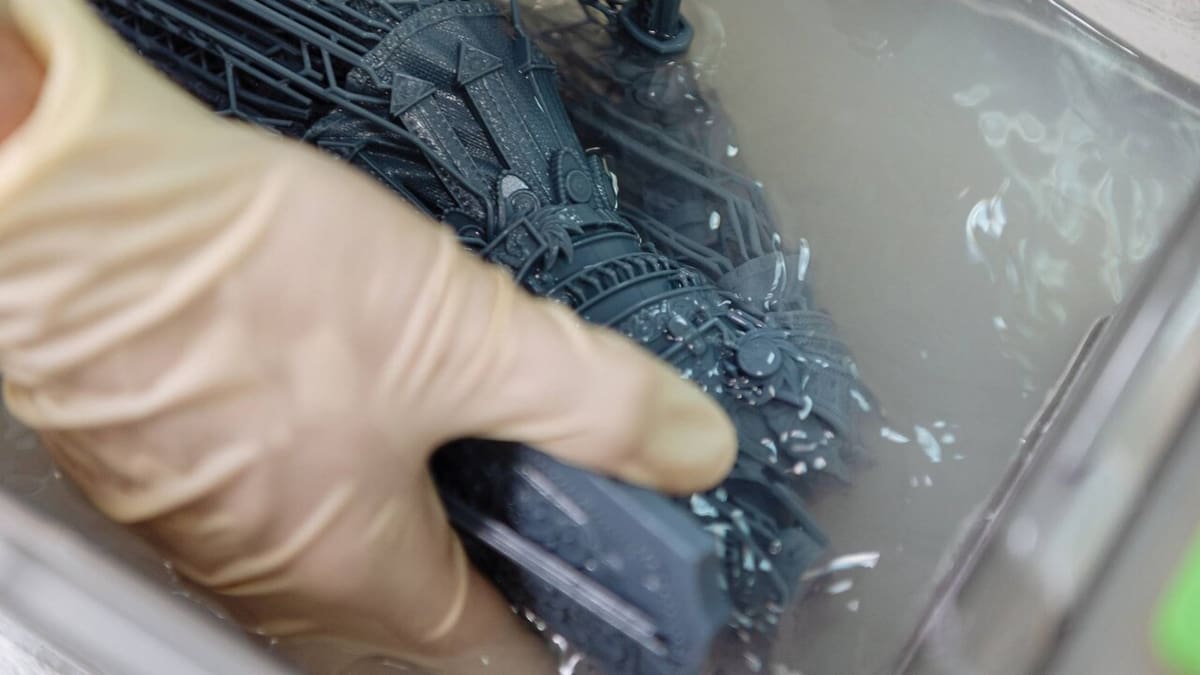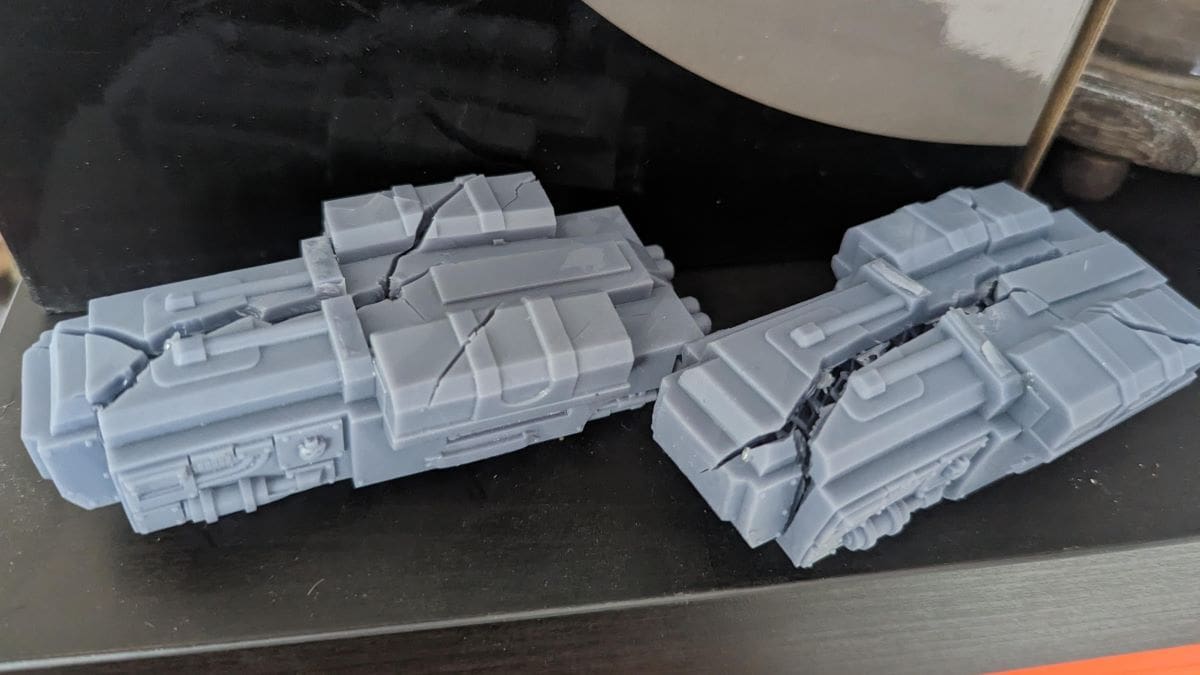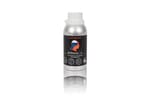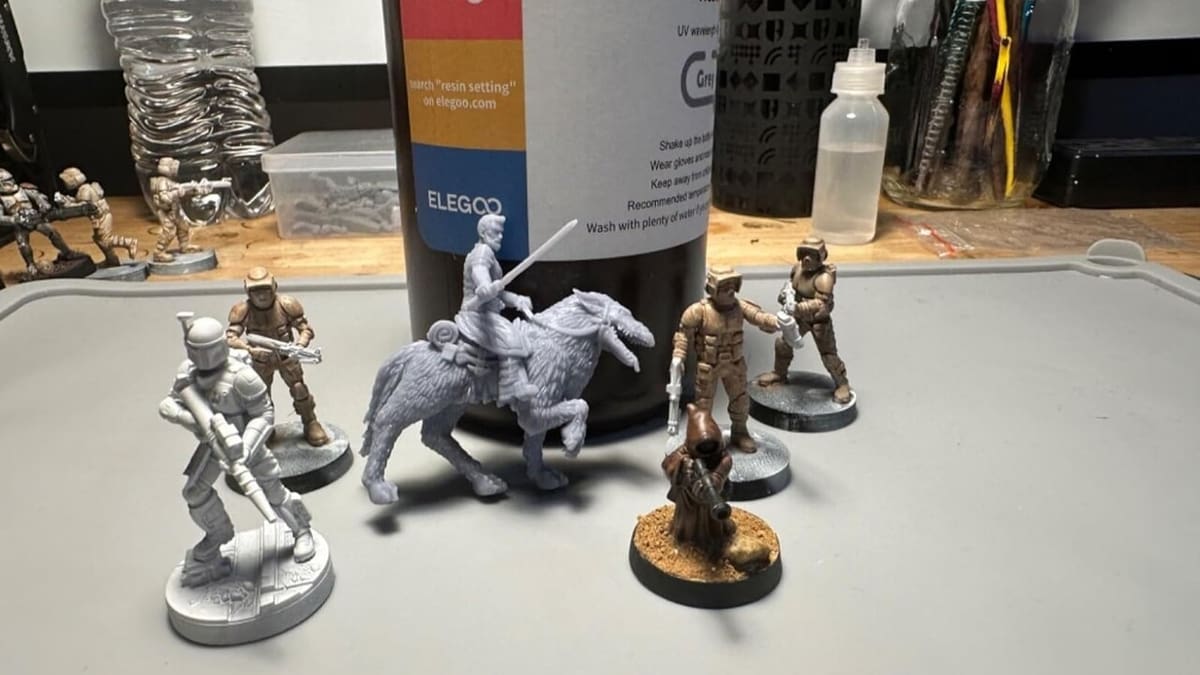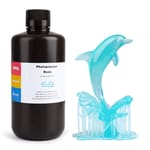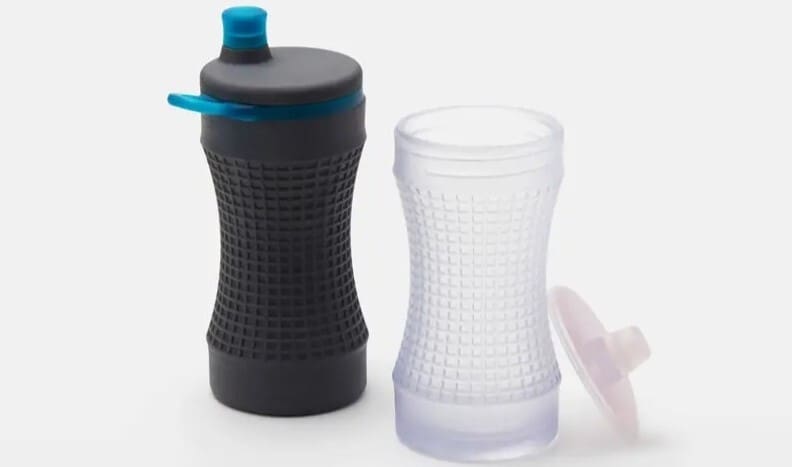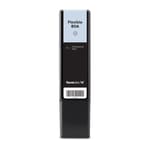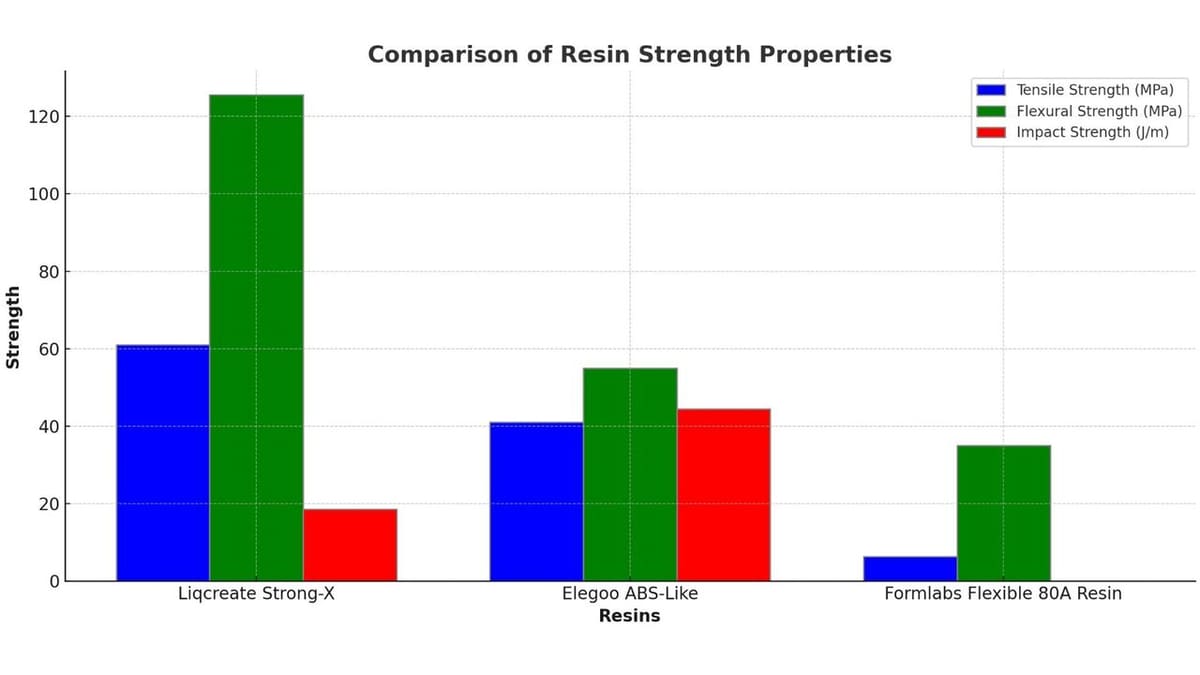Resin 3D printing is celebrated for its ability to produce parts with intricate details and smooth surfaces. Initially favored for aesthetics and prototyping, stereolithography (SLA) and its sister technologies, masked stereolithography (MSLA/LCD) and digital light processing (DLP), are proving that resin isn’t just about looks – it can also pack a punch.
All three share the fundamental principle of curing liquid resin layer by layer using light; however, they differ in their light sources and projection methods. Where SLA employs a laser to trace the object’s shape, offering high precision but often slower speeds, DLP uses a digital projector to flash a single image of each layer, increasing speed but potentially sacrificing some resolution. Similarly to DLP, LCD utilizes an LCD screen to mask the light, achieving a balance of speed and resolution.
Many resins are compatible across all three technologies, although some may be specifically formulated for one or the other due to differences in curing wavelengths or light intensity.
But what about strength? Traditionally, resin 3D prints have been perceived as somewhat fragile compared to their fused deposition modeling (FDM) counterparts. However, recent developments in resin formulations have paved the way for a new generation of tough and durable resins capable of rivaling, and in some cases exceeding, the strength afforded of specialty filaments.
In this article, we get into the world of high-strength resins, exploring their properties, the factors that influence their performance, and the diverse applications where their strength truly shines. Whether you’re an engineer, designer, hobbyist, or simply curious about the latest advancements in 3D printing, prepare to be amazed by the remarkable strength and versatility of modern resin 3D prints.
Strength in Numbers
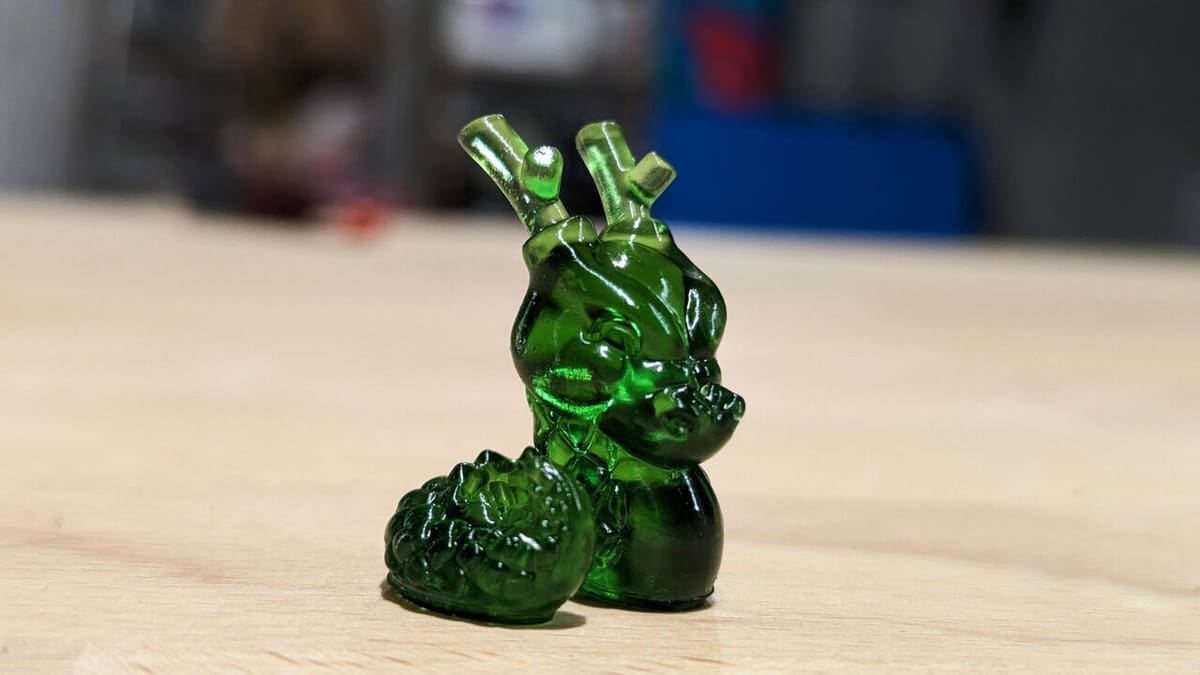
When talking about the strength of 3D printing resin, it’s important to know that “strength” isn’t just one thing. It includes several ways a material can resist breaking or changing shape under different forces. Here are the main strength properties for resin 3D prints:
- Tensile strength: This is how well the resin can handle being pulled apart. Think about stretching a rubber band; tensile strength is how much force it can take before it snaps. A higher tensile strength means the resin is less likely to break when pulled.
- Flexural strength: This measures how well the resin can resist bending. Imagine a plastic ruler bending under pressure; flexural strength is how much force it can take before it cracks or bends permanently.
- Impact strength: This tells us how well the resin can handle sudden shocks or hits without breaking. It’s like the difference between a phone case that cracks when dropped once and one that can survive several drops.
- Compressive strength: This is the opposite of tensile strength. It measures how much squeezing force the resin can handle before it changes shape or collapses.
- Shear strength: This measures how well the material can resist forces pushing in opposite directions along a flat plane. Think about cutting a fruit with a knife; shear strength is how much force it takes to cut through, with some fruits being harder to cut than others.
Next, we’ll look at how different types of resins compare to FDM materials.
Resin vs. FDM
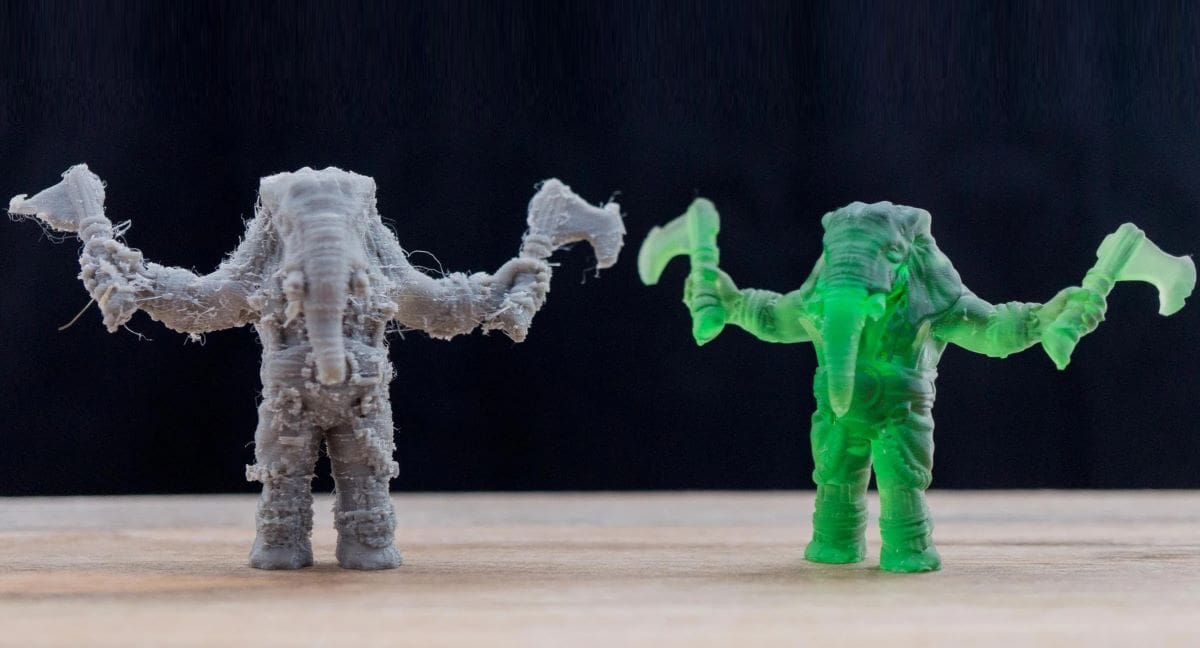
Comparing resin to FDM in terms of strength isn’t a simple apples-to-apples situation. FDM parts can vary greatly in strength depending on factors like infill percentage and pattern, layer height, and the filament itself. However, we can draw some general comparisons depending on the type of resin. These can be standard (not tailored to a specific use), tough (include additives in their formulation), and high-performance resins (have superior strength, elasticity, chemical resistance, and more).
Tensile Strength
- Standard resins: Roughly comparable to PLA (40-50 MPa) and some PETG blends (40-60 MPa).
- Tough resins: Can outperform standard PLA and PETG, sometimes even reaching the higher end of ABS strength (up to 70 MPa).
- High-performance resins: Can easily exceed the tensile strength of most common FDM filaments, with some reaching upwards of 90 MPa.
Flexural Strength
- Standard resins: Similar to PLA (around 50-60 MPa).
- Tough resins: Often significantly stronger than PLA and PETG, sometimes even surpassing ABS (up to 100 MPa).
- High-performance resins: Can far exceed the flexural strength of common FDM filaments, with some boasting values over 130 MPa.
Impact Strength
- Standard resins: Generally more brittle than FDM filaments, but this can vary significantly between resins.
- Tough resins: Designed to absorb impacts, often matching or exceeding the impact resistance of tough PLA blends or ABS.
- High-performance resins: Can vary widely, with some prioritizing other properties over impact resistance.
With the general comparison of technologies offering a broader context on what the different processes and materials have to offer, let’s take a closer look at other factors that come into play for resin printing.
More than Materials
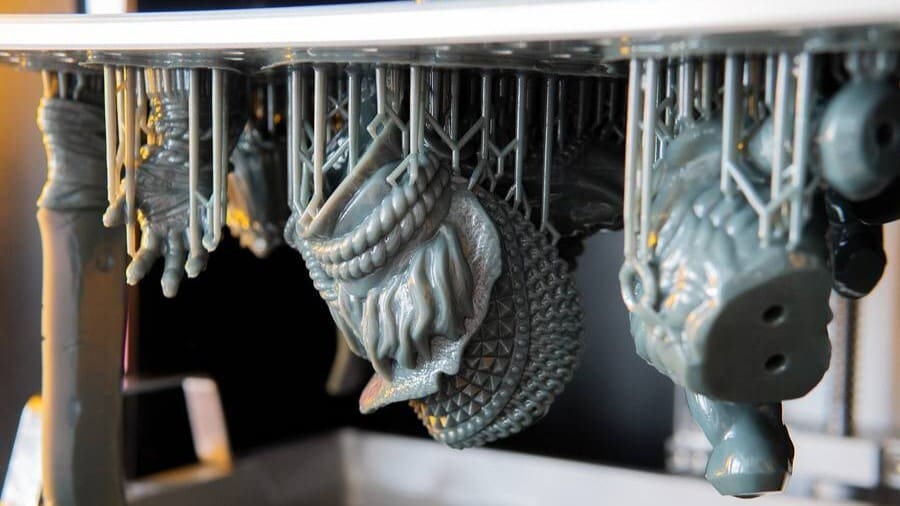
The strength of your 3D printed parts isn’t just about the resin you use. Other factors also play a big role in whether your part is weak or strong.
Stress Concentration
Even though resin is the same in all directions, the shape of a part can create stress points at sharp corners or edges. These stress points can be weak spots, and the way the part is positioned can affect where these weak spots are in relation to the force applied.
Support Structures
Support structures are needed for successful resin printing, but they can create stress points and potential weak areas in the final print. The way a part is oriented when printing can affect where and how many supports are needed, which can indirectly affect the overall strength of the printed object.
Post-Processing
Post-processing is an important step in resin 3D printing that affects the final strength and function of the parts. Proper post-processing helps prints achieve their best mechanical properties – and look good, too.
Supports Removal
The first step is to remove the supports. These temporary structures are needed during printing to support overhangs and complex shapes, but they must be carefully taken off after printing. You can use tools like flush cutters or pliers to carefully pry them away. If supports aren’t removed properly, they can leave stress points or small cracks on the surface, weakening the structure. For the best strength, remove supports after curing because cured prints are harder and less likely to be damaged during this step.
Washing
The next step is washing. This means cleaning your print to remove any uncured (liquid) resin on the surface or in internal cavities, with different considerations depending on the type of resin. Isopropyl alcohol (IPA) is usually used for this, but tripropylene glycol monomethyl ether (TPM) is becoming popular as a safer alternative. Whether you dunk the print in a solvent bath, use a spray bottle, or a dedicated washing station, the goal is to get rid of the uncured resin. Washing prevents surface stickiness and improves the print’s mechanical properties.
Curing
The final step is curing. This involves exposing the print to UV light, which causes a chemical reaction called crosslinking. This reaction bonds the polymer chains in the resin, solidifying the material and enhancing its strength. Proper curing is important to achieve the resin’s full strength, hardness, and other properties. UV lamps and dedicated resin curing stations are commonly used for this.
Different resins may need specific wavelengths of UV light, so it’s important to use a lamp that emits the right spectrum. Curing times vary based on the resin type, light intensity, and print thickness. Proper curing is essential; under-curing leaves the resin soft and weak, while over-curing can make it brittle.
Design Considerations
The design of your 3D model greatly affects the strength of the final print. Here are some important points to consider:
Wall Thickness
Thicker walls usually make stronger parts because they have more material to resist breaking and deformation. However, thicker walls also take longer to print and use more material. For most resin prints, it’s recommended to have a wall thickness of at least 1-2 mm to ensure the part is strong while balancing material use and print time.
Geometry
Sharp corners and edges can create stress points, making the part more likely to break. Using fillets (rounded corners) helps spread stress more evenly and strengthens the part. For unsupported walls, ensure a minimum thickness of 1 mm and use filleted bases to reduce stress along the joint and prevent warping or detachment during printing.
Hollowing & Drain Holes
Making resin prints hollow can save material and reduce weight, but it’s important to include drainage holes to prevent uncured resin from getting trapped inside. Trapped resin can cause pressure imbalances, leading to cracks or failures. The walls of hollow prints should be at least 2 mm thick to maintain strength.
Applications
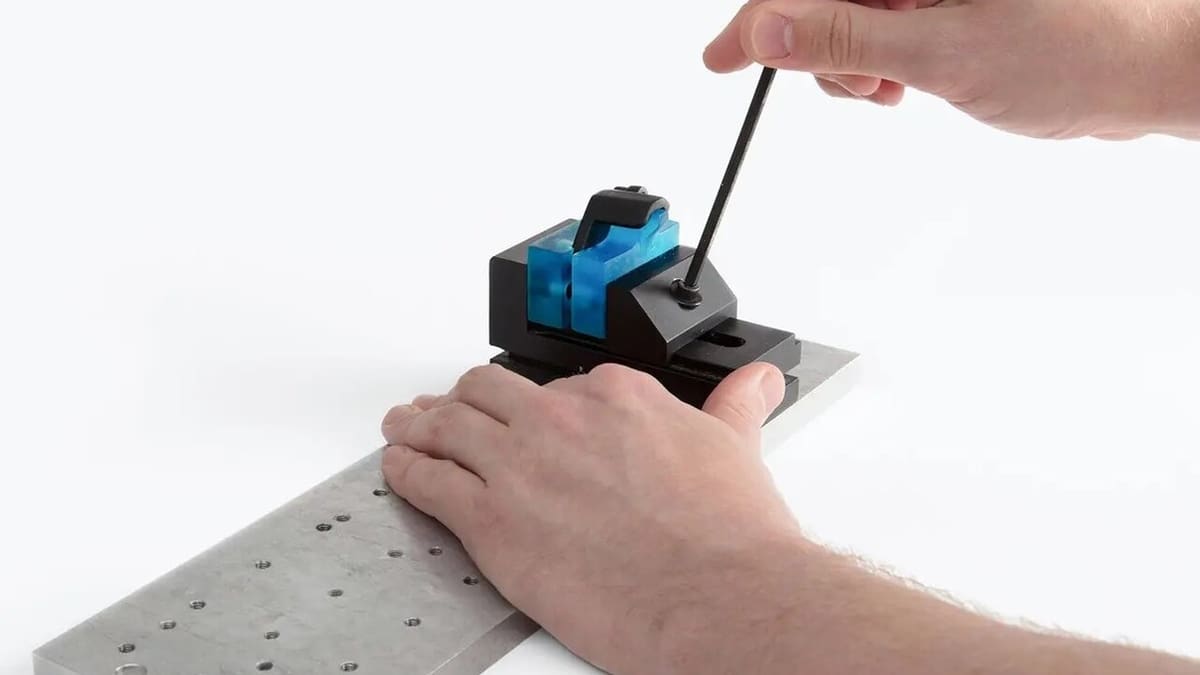
The exceptional strength of modern resins isn’t just theoretical; it’s creating exciting new possibilities in various fields. Here are some real-world examples showing how strong resins are transforming 3D printing applications:
Functional Prototyping
Tough resins are incredibly useful for making functional prototypes, allowing engineers and designers to create parts that can handle real-world testing. For example, the automotive industry uses resins like Formlabs Tough 2000 Resin to 3D print complex snap-fit mechanisms, hinges, and other functional components. These prototypes can endure repeated use, stress, and impact, providing valuable feedback on the design before committing to expensive mass production tools.
End-Use Parts
The strength of some resins is now good enough for making not just prototypes but also end-use parts. In manufacturing, for instance, jigs and fixtures – tools used to hold and position workpieces during assembly or machining – are being 3D printed in tough resins. These printed tools can withstand daily wear and tear, offering a cost-effective and customizable alternative to traditional manufacturing methods.
Creative Applications
The strength of resin opens up new possibilities for artists and hobbyists. Resin jewelry designers, for example, can now create intricate and delicate pieces that are less likely to break. Delicate filigree patterns, thin walls, and complex shapes that were once too fragile for resin can now be made reliably, thanks to the improved strength of tough resins. Additionally, the smooth surface finish and variety of colors available in resin 3D printing allow for beautiful and durable artistic creations. And gaming experiences can be heightened with stunning miniatures.
Next, we’ll look at three examples of resin 3D prints and explain what each strength category means for their performance.
Best Options
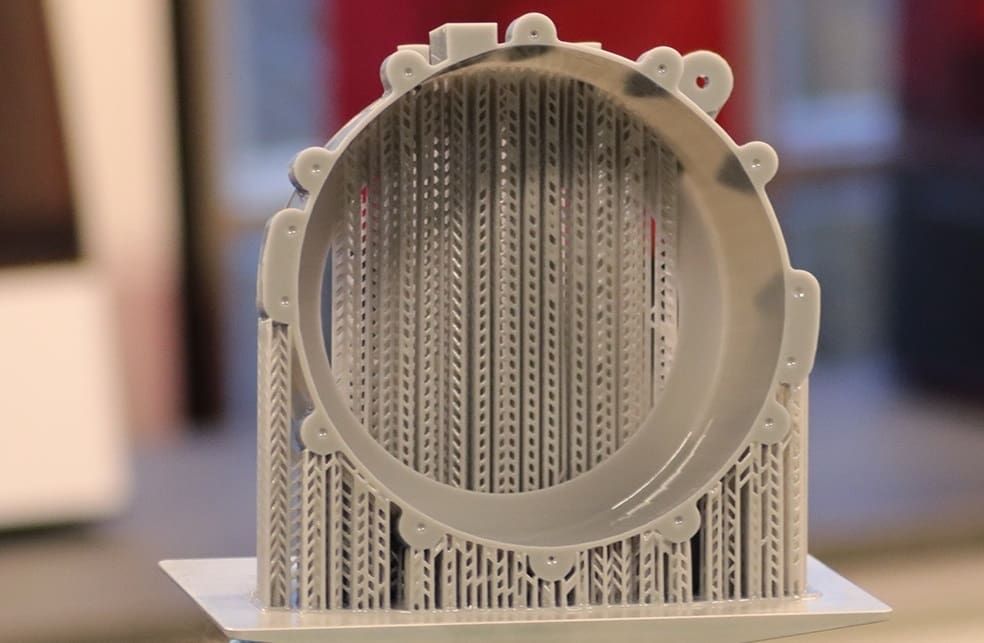
With so many resins available, choosing the right one for your project can be challenging. Let’s look at three standout options that suit different needs and budgets. We will highlight their strengths, weaknesses, ideal uses, and user experiences.
Liqcreate Strong-X
Liqcreate Strong-X is the top choice for sheer strength, as it’s designed to be a workhorse. It matches engineering-grade plastics, making it ideal for demanding applications, from functional prototypes for stress testing to engineering parts. it has exceptional tensile and flexural strength, high impact resistance, excellent dimensional accuracy, is versatile for demanding functional parts, and is compatible with a wide range of printers. However, this wide range of properties comes at a higher cost and requires longer curing times compared to other resins; it’s also not the best option for flexible models.
- Tensile strength: 52-70 MPa (post-cured with high-power LED for 30 minutes at 60 °C; potentially reaching 60-84 MPa with 120 minutes curing)
- Flexural strength: 121-130 MPa (standard curing; increasing to 134-140 MPa with extended curing)
- Impact strength (notched Izod): 20 J/m (standard curing; slightly reduced to 17 J/m with extended curing)
- Price per kg: ~$170
- Compatible technology: SLA, DLP, LCD
Elegoo ABS-Like
Elegoo ABS-Like Resin offers a good balance between affordability and performance, making it popular among hobbyists and those looking for a budget-friendly option for functional parts. Its mechanical properties may not be as extreme as high-end resins, but it’s more than capable for many applications, including general-purpose functional parts like household items, prototypes, and creative projects. It’s also easy to print and post-process, making it user-friendly. However, it can be slightly brittle and isn’t ideal for extreme temperature resistance.
- Tensile strength: 30-52 MPa
- Flexural strength: 40-70 MPa
- Impact strength (notched Izod): 41-48 J/m
- Price per kg: ~$30
- Compatible technology: LCD, DLP
Formlabs Flexible 80A Resin
Formlabs Flexible 80A Resin is unique for those needing flexibility and tear resistance over sheer strength. With high elongation (100-120%) and tear strength (11-24 kN/m depending on color), it’s perfect for parts that need to bend, flex, or absorb impact. While not as strong in tensile or flexural strength as other options, its unique properties are ideal for 3D printing soft-touch grips, wearables, gaskets, and other applications where flexibility is important. However, this same flexibility can make it challenging to print.
- Tensile strength: 3.7 MPa (green, post-cured) to 8.9 MPa (black, post-cured)
- Flexural strength: 31-39 Mpa
- Impact strength: N/A
- Price per liter: ~$200
- Compatible technology: SLA
How Do They Compare?
The numbers are clear: High-strength resins have greatly improved in mechanical performance. For example, Liqcreate Strong-X has a tensile strength of up to 84 MPa, which is about three times that of some standard resins that usually have around 30 MPa. This means tougher resins can handle much more pulling force before breaking. In terms of flexural strength, high-performance resins like Strong-X can exceed 130 MPa, while standard resins might only reach 40-50 MPa. This means they have a much better ability to resist bending and deformation under load.
Craftcloud
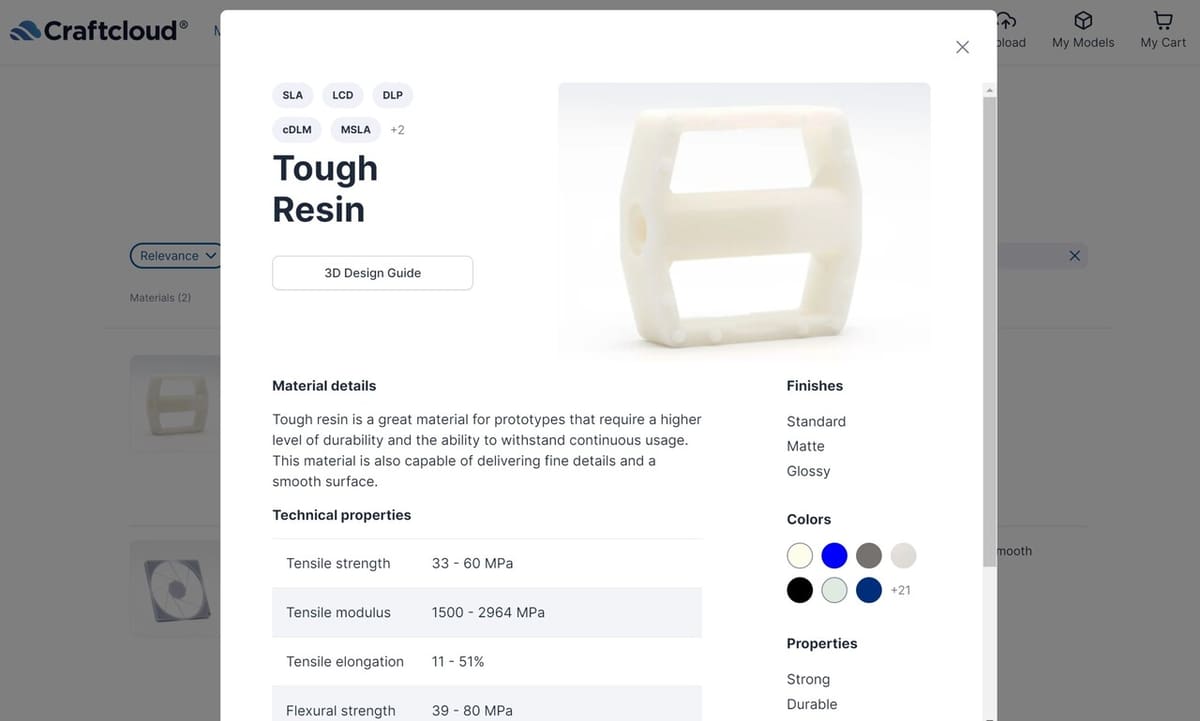
Craftcloud is a 3D printing marketplace for those who don’t have their own resin 3D printer, who don’t want to invest in the material if they’re not sure it’ll deliver the results they’re after, or who simply prefer a hassle-free printing experience. Craftcloud’s manufacturers offer access to a wide variety of high-quality resins, including a curated selection of tough and functional materials perfect for demanding applications.
One of Craftcloud’s standout features is its user-friendly interface, which allows you to easily upload your 3D model, choose your desired resin and manufacturer, get an instant quote, and sit back and relax while you wait for the strong prints to be delivered to your doorstep.
For those seeking tough and durable prints, Craftcloud offers a range of options, including:
- High-strength resins (e.g. nylon-like, durable): Similar to Liqcreate Strong-X, these excel in tensile and flexural strength, making them suitable for functional prototypes and end-use parts.
- Tough resins: These prioritize impact resistance and durability, and are ideal for parts that need to withstand wear and tear.
- Flexible resins: If you need parts that can bend and flex, Craftcloud offers flexible resins with varying degrees of elasticity.
License: The text of "SLA Resin Strength: How Strong Is 3D Printed Resin?" by All3DP is licensed under a Creative Commons Attribution 4.0 International License.
CERTAIN CONTENT THAT APPEARS ON THIS SITE COMES FROM AMAZON. THIS CONTENT IS PROVIDED ‘AS IS’ AND IS SUBJECT TO CHANGE OR REMOVAL AT ANY TIME.

